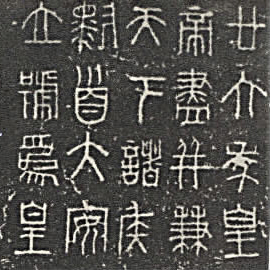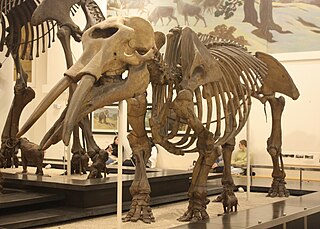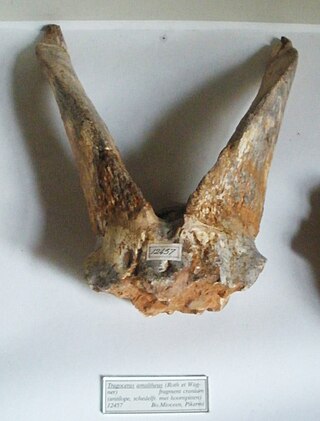
Qin Shi Huang was the founder of the Qin dynasty and the first emperor of China. Rather than maintain the title of "king" borne by the previous Shang and Zhou rulers, he assumed the invented title of "emperor", which would see continuous use by monarchs in China for the next two millennia.
Zhao Gao was a Chinese politician. He was an official of the Qin dynasty of China. Allegedly a eunuch, he served as a close aide to all three rulers of the Qin dynasty – Qin Shi Huang, Qin Er Shi and Ziying – and was regarded as having played an instrumental role in the downfall of the dynasty.
Qin Er Shi, given name Ying Huhai, was the second emperor of the Chinese Qin dynasty, reigning from 210 to 207 BC. The son of Qin Shi Huang, he was put on the throne by Li Si and Zhao Gao, circumventing his brother Fusu, who had been the designated heir. Upon Huhai's ascension, both Fusu and the popular general Meng Tian were killed on the orders of Li and Zhao, with Qin Er Shi's role in the assassinations remaining uncertain and controversial. A weak ruler, Qin Er Shi's reign was completely dominated by Zhao Gao, who eventually forced him to commit suicide. By the time of his death, the Qin Empire's power had lessened so much that his successor Ziying ruled as a king, not emperor.

Seal script or sigillary script is a style of writing Chinese characters that was common throughout the latter half of the 1st millennium BC. It evolved organically out of bronze script during the Zhou dynasty (1046–256 BC). The variant of seal script used in the state of Qin eventually became comparatively standardized, and was adopted as the formal script across all of China during the Qin dynasty (221–206 BC). It was still widely used for decorative engraving and seals during the Han dynasty.
Li Si was a Chinese calligrapher, philosopher, and politician of the Qin dynasty. He served as Chancellor from 246 to 208 BC, first under King Zheng of the state of Qin—who later became Qin Shi Huang, the "First Emperor" of the Qin dynasty. He then served under Qin Er Shi, Qin Shi Huang's eighteenth son and the second emperor. Concerning administrative methods, Li Si is said to have admired and utilized the ideas of Shen Buhai, repeatedly referring to the technique of Shen Buhai and Han Fei, but regarding law, he followed Shang Yang.

Platybelodon is an extinct genus of large herbivorous proboscidean mammals related to modern-day elephants, placed in the "shovel tusker" family Amebelodontidae. Species lived during the middle Miocene Epoch in Africa, Asia and the Caucasus.
Meng Tian was a Chinese inventor and military general of the Qin dynasty who distinguished himself in campaigns against the Xiongnu and in the construction of the Great Wall of China. He was the elder brother of Meng Yi. He descended from a great line of military generals and architects. His grandfather, Meng Ao, was a general from the era of King Zhao; and his father, Meng Wu, was also a general who served as a deputy to Wang Jian.

Gomphotherium is an extinct genus of gomphothere proboscidean from the Neogene of Eurasia, Africa and North America. It is the most diverse genus of gompothere, with over a dozen valid species. The genus is probably paraphyletic.

Tetralophodon is an extinct genus of "tetralophodont gomphothere" belonging to the superfamily Elephantoidea, known from the Miocene of Afro-Eurasia.
Paratetralophodon is an extinct genus of proboscidean from late Neogene deposits in India and China. Although traditionally classified in the family Gomphotheriidae, recent studies find it to be more closely related to modern elephants.
Tsaidamotherium is an extinct genus of Late Miocene ovibovinid caprine from the Tibetan Plateau of Northwestern China. Both known species are extremely unusual in that the horns are of unequal sizes: the left horn core is several times smaller than the right horn core. Although it is originally considered that it belongs to the tribe Ovibovini, close to the muskox, Ovibos moschatus, a study in 2022 posits Tsaidamotherium as a giraffoidean genus in the family Prolibytheriidae together with Prolibytherium and Discokeryx.

Konobelodon is an extinct genus of amebelodont proboscidean from the Miocene of Africa, Eurasia and North America.

Torynobelodon was a genus of large herbivorous mammal related to the elephant. It lived during the late Miocene Epoch in Asia and North America.
Diestramima is a genus of camel crickets in the subfamily Aemodogryllinae and tribe Diestramimini. Species can be found in: India, southern China and Indo-China.

Tachycines is a genus of camel crickets in the subfamily Aemodogryllinae and tribe Aemodogryllini. Some authorities had placed the type species, T. asynamorus, in the genus Diestrammena, but recent papers returned this to the subgenus Tachycines (Tachycines), with a substantial number of new species recently described.

Artoviridae is a family of negative-strand RNA viruses in the order Mononegavirales. Barnacles, copepods, odonates, parasitoid wasps, pile worms, and woodlice serve as natural hosts. The group name derives from arthropod the phylum of its hosts. Members of the family were initially discovered by high throughput sequencing.

The Liushu Formation is a geological formation in Gansu province, China that spans up to 100 m thick and is widely distributed within the Linxia Basin, with a paleomagnetic age between 11 and 6.4 mya.
Eurybelodon is an extinct genus of proboscidean in the family Amebelodontidae. It lived in the Clarendonian age of the Miocene.

Tragoportax is an extinct genus of bovid ungulate. It lived during the upper Miocene, and its fossils have been found in Europe, Asia and Africa. Tragoportax is sometimes considered to have been a close relative of the extant nilgai, though it may have formed its own subfamily, along with Miotragocerus.
Olonbulukia is an extinct genus of caprine from the Late Miocene. It is monotypic, containing the only species Olonbulukia tsaidamensis.











